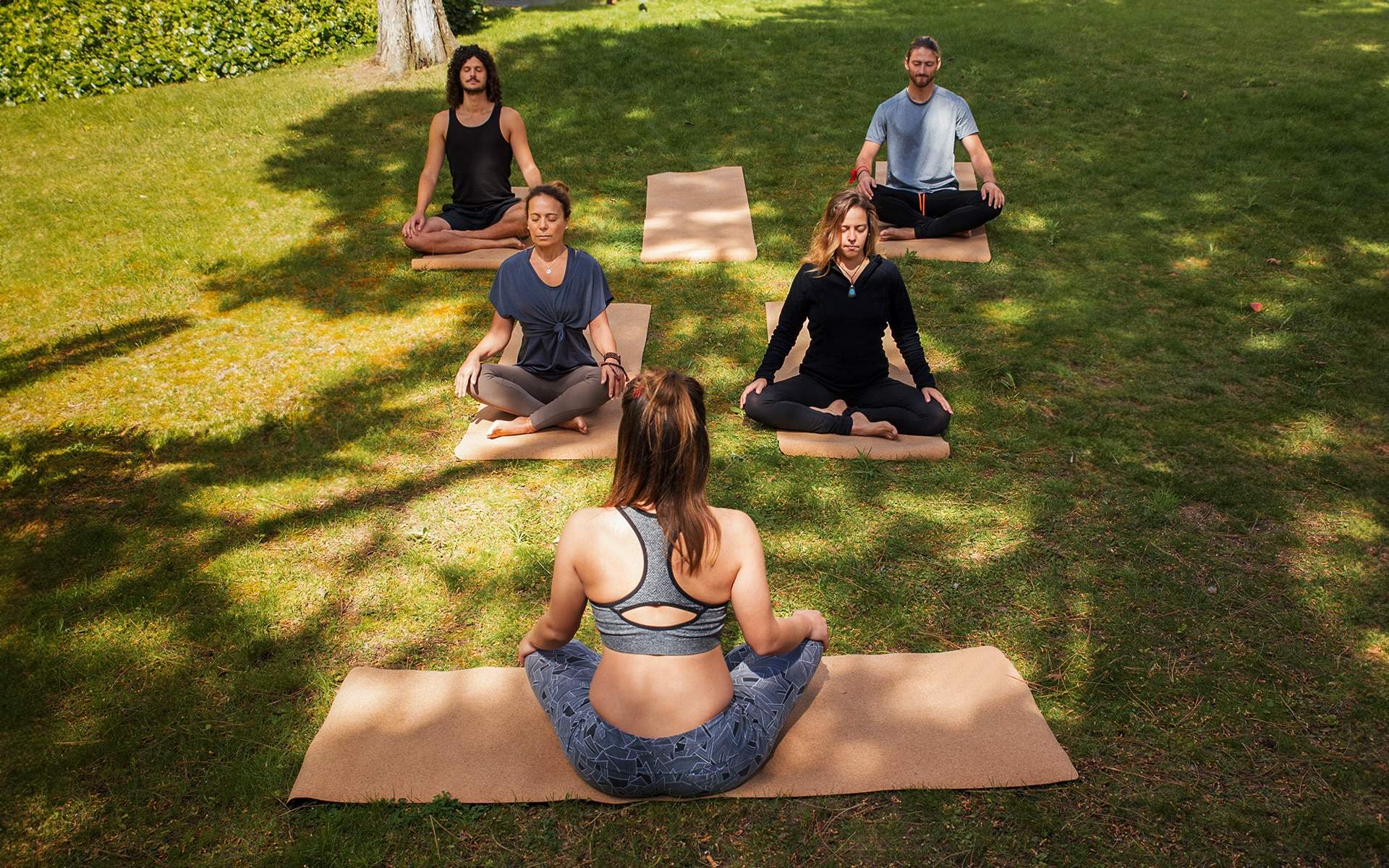The Benefits of Meditating With Others
We’re accustomed to thinking of meditation as a solitary activity, but meditating in community also offers a host of benefits. The post The Benefits of Meditating With Others appeared first on Mindful.

This article is independently researched and written by the Mindful editors. However, we may earn affiliate revenue if you purchase via links included.
In the midst of the global pandemic that disrupted our routines and heightened stress levels, many people turned to meditation as a source of comfort, healing, and much-needed self-care in scary and uncertain times.
Millions of people discovered the benefits of mindfulness, like deeper relaxation, heightened self-awareness, better sleep, and a more grounded sense of well-being. Plus, meditation apps and online platforms made it easy to practice in the comfort of our own homes.
Research confirms the value of a regular meditation practice, and much of that research is focused on solo practicing. However, there’s now also an emerging recognition of the benefits that come with meditating in community.
If you’ve been curious about expanding your own practice to include intentionally being with others, here’s what you need to know about the history and benefits of meditation in community.
Meditation, in various forms, has a rich and diverse history that spans cultures, centuries, and traditions. Historically, rather than just being a solitary activity, meditation was often practiced in communal settings, rooted in the belief that collective intention enhanced the experience and benefits of the practice.
Rather than just being a solitary activity, meditation was often practiced in communal settings, rooted in the belief that collective intention enhanced the experience and benefits of the practice.
Monasteries, ashrams, and other spiritual communities have been pivotal in fostering a shared meditative environment for millenia, but group meditation certainly hasn’t only been connected to religious settings.
In the West, meditation has been a part of secular communities for decades, focusing on the mind-body benefits of a regular practice: stillness, self-observation, calming reactivity, and extending compassion to all beings. Programs like Jon Kabat-Zinn’s Mindfulness-Based Stress Reduction offer meditation instruction for clinicians, schools, offices, therapists, and other science-based healing modalities.
In all of these diverse group settings, meditating in community has offered a space for people to share wisdom and support each other on their mindfulness journeys. And that tradition is still going strong.
So why do people like group practice? Let’s look at what more and more people are seeking on their journeys, and how meditating in community can meet these needs.
1. Enhanced Meaning
If you’ve ever felt the amplified joy and connection of being in a like-hearted group—say, at an outdoor concert or a convention of dedicated enthusiasts—you’ve probably experienced that moment where it all seems like you’re tuned into the same beautiful channel. Meditating in a group can do exactly the same thing, creating a powerful and motivating atmosphere.
2. Camaraderie and Connection
Humans are inherently social beings, and meditation in community provides an opportunity for shared experiences. It fosters a sense of camaraderie, reducing feelings of isolation and promoting a supportive network. Especially after the years of the pandemic, people are hungry for a sense of meaningful social reconnection.
3. Deeper Mindfulness
Group meditation can deepen one’s mindfulness practice. The shared commitment to practice fosters a sense of accountability, encouraging regular meditation and creating a more profound and transformative experience.
4. Diverse Perspectives
In an era of unprecedented division and siloing, there is healthy, challenging work that can really only happen when we are intentionally present with people who are different from us. Meditating in community exposes individuals to diverse perspectives and approaches to meditation. This variety can enrich one’s practice by offering different insights, techniques, and philosophies.
While there’s not much research available on meditation in group environments versus solitary practice, here are some of the benefits that people who have chosen to meditate in community report.
1. Enhanced Focus
The collective intention of a group can help participants achieve a deeper state of focus during meditation, reducing distractions and enhancing the overall quality of the practice.
2. Stress Reduction
Shared meditation experiences can contribute to a sense of calm and relaxation, especially in groups where there is a genuine sense of trust and care. Being around people we feel safe with alleviates stress and anxiety, promoting emotional well-being.
3. Increased Motivation
Sometimes going it alone is just plain harder. Group meditation provides a shared commitment, a space where everyone can feel cheered on, and a positive cycle of encouragement.
4. Supportive Environment
Meditating in community fosters a supportive environment where individuals can share their challenges, successes, and insights. This sense of community can be a valuable resource on one’s meditation journey.
In the contemporary context, the choices for meditating in community have expanded, catering to a diverse range of preferences and beliefs. Importantly, these options are often designed to be inclusive and secular, making meditation accessible to people from various walks of life.
Here are some to consider:
1. Banyan
Co-founded by globally-renowned teachers Tara Brach and Jack Kornfield, Banyan is an online platform that focuses on creating a digital meditation community where users can participate in live sessions, courses, discussions, and challenges. It strives to build a real sense of connection in the online space. Banyan honors both old and new, using proven practices from ancient wisdom traditions and adapting them to the modern world.
2. Meetup Meditation Groups
People can access the Meetup platform to connect individuals interested in local in-person or virtual meditation groups. This allows for a diverse range of community experiences. Many groups are secular and welcome participants with different backgrounds.
3. Plumline
For those who want to connect with people all across the globe and meditate in the Plum Village tradition, Plumline offers online group meditation options. Plumline also offers affinity groups, so meditators can connect with others sharing similar challenges or life experiences.
4. Your Local Gym or Yoga Studio
As demand grows, more fitness centers and yoga studios are featuring group meditation classes as part of their offerings. Call around and find out!
5. Start Your Own Group
As teacher Tara Brach notes, there’s nothing fancy or formal that is required to be in a meditation group. It’s possible to simply gather some friends together and create your own experience of meditating in community.
As the world navigates the challenges of the pandemic and beyond, the practice of meditating in community offers a profound and accessible path to well-being. Whether online or in-person, the diverse options available cater to individuals seeking a sense of connection, shared focus, and personal growth.

 Konoly
Konoly 
































